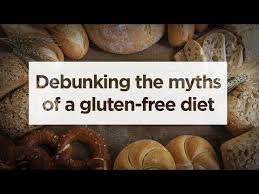
Gluten-free diets have exploded in popularity over the last decade. Supermarkets are filled with gluten-free bread, pasta, and snacks, and many people swear by the lifestyle for better health, weight loss, or more energy. But is going gluten-free really as beneficial as it seems—or are there hidden truths we often overlook?
1. What Gluten Actually Is
Gluten is a protein found in wheat, barley, and rye. It gives bread its chewy texture and helps foods maintain their shape. For most people, gluten is harmless. However, for those with celiac disease, consuming gluten triggers an immune response that damages the small intestine. Others may have non-celiac gluten sensitivity, which causes bloating, fatigue, or digestive discomfort without the immune reaction.
2. Who Really Needs to Avoid Gluten
Only about 1% of the population has celiac disease, and a slightly larger percentage is gluten sensitive. For these groups, avoiding gluten is medically necessary. For the rest, there’s little scientific evidence that cutting gluten improves health. In fact, unnecessarily removing gluten could create new health issues.
3. The Nutrient Gaps of Going Gluten-Free
Many gluten-free processed foods are lower in essential nutrients like fiber, iron, and B vitamins compared to their whole-grain counterparts. Without careful planning, a gluten-free diet can lead to deficiencies and digestive issues like constipation. Simply swapping regular bread for gluten-free bread isn’t always the healthiest move.
4. Gluten-Free Doesn’t Always Mean Healthy
Marketers often label foods “gluten-free” to make them sound healthier, but many of these products are packed with sugar, unhealthy fats, and additives to mimic the texture of gluten. Gluten-free cookies are still cookies—and just as likely to spike your blood sugar.
5. The Weight Loss Myth
Some people turn to gluten-free diets to lose weight, but this effect usually comes from cutting out refined carbs (like white bread, pastries, and pizza) rather than gluten itself. The problem arises when people replace those foods with equally processed gluten-free alternatives, negating any potential benefits.
6. The Social and Financial Cost
Gluten-free products are often more expensive than regular foods—sometimes double the price. For those without medical necessity, the cost may outweigh the benefits. Additionally, navigating social situations—like eating out—can become unnecessarily stressful.
7. A Smarter Way Forward
If you don’t have celiac disease or gluten sensitivity, the healthiest choice may not be cutting gluten but rather focusing on whole, minimally processed grains like oats, quinoa, brown rice, and whole wheat. These provide fiber, vitamins, and minerals that support long-term health.
Final Thoughts
Gluten-free diets aren’t inherently “bad,” but they’re not a magic health solution either. For people with celiac disease or gluten sensitivity, going gluten-free is essential. For everyone else, a balanced diet with whole grains is usually the better option.